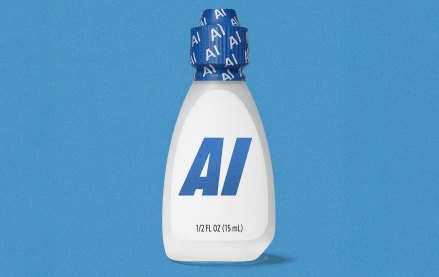How CTV advertisers leverage show-level data for programmatic success

Mario Diez, Chief Executive Officer, Peer39
CTV remains the belle of the ball to advertisers, especially those looking to reach TV and video audiences amid falling linear viewership. Even with scaled-back forecasts, CTV is growing at an exceptional rate and is expected to reach nearly $41 billion in ad spend by 2027.
That level of investment demonstrates the confidence advertisers place in the channel to deliver audiences and results. It also means they have a great deal of trust in the overall landscape, but the question is: should they?
The rapid growth of the CTV landscape also comes with the development of less-than-favorable territories. There is a chance that brands could see their CTV ads land on undesirable content in the form of divisive, polarizing political content or even within apps that aren’t delivering content at all.
To ensure ads appear within quality, brand-safe, suitable environments, advertisers need more information on the content or programming in which the ads they purchase are to run. However, this requires cooperation from the industry to establish a new system in which contextual and semantic signals and show-level data are shared with advertisers to ensure confidence in and continual investment in the channel.
Low-quality suppliers, fake content and sensitive environments pose challenges for CTV advertisers
Several key quality issues may pose a challenge that advertisers must be aware of as they invest in CTV — low-quality suppliers, fake CTV content and sensitive environments such as divisive news.
Recent Peer39 research into these areas revealed some alarming trends. Across nearly two months of first-hand viewership analysis, researchers found that 55% of all ads appearing on divisive news channels — hyper-partisan, less reputable news outlets — belonged to Fortune 500 brands. More than 9% of those ads came from Fortune 500 auto brands, meaning that these brands were advertising alongside content that, in all likelihood, did not match their expectations.
With the 2024 presidential election a little more than a year away, brands should anticipate that the hyper-partisan content will only increase in volume. With several hot-button issues at the heart of this election cycle, there is a lot for brands to navigate.
In addition to less reputable new outlets, fake content is plaguing brands across CTV. In this context, fake content is defined as content that doesn’t fit the concept of TV, which includes screensaver channels, photo widgets, games and mobile apps pretending to be CTV streaming. Fortune 500 companies fared better across the fake content apps and channels observed in the study — accounting for only 36% of all impressions across primetime and daytime.
Still, it’s alarming that more than one out of every three ads in these low-value app environments come from a Fortune 500 brand. All brands buying these ads — 163 in total — are paying premium CTV ad rates to have their creative appear alongside screen savers or within junk apps.
Not only is this a waste of budget, but it could also adversely affect consumer sentiment. Consumers themselves may feel tricked by these misleading CTV apps, and that feeling can easily be applied to any brands appearing within them.
To achieve CTV confidence, advertisers need semantic and contextual signals
Looking back to the display market, historic brand safety has evolved into brand suitability, whereby brands craft a detailed plan to analyze content and evaluate its worthiness for ad placements.
The large number of semantic and contextual signals available for web inventory makes this all possible, and brands can avoid different content categories or levels of risk within those categories. This has opened up a world of nuanced ad targeting, helping brands better align creative messages with suitable moments when consumers are in the right mindset to engage.
However, most of these signals are not widely available within CTV. Most CTV providers have held back on sharing metadata around programming and impressions out of fear of commoditizing their inventory.
While this is understandable, it creates issues, such as decreasing advertiser confidence and preventing further spending. Simply put, if CTV advertisers can’t access the same levels of control as linear, the channel will never reach the investment potential that many are forecasting.
CTV advertisers also need show-level data before confidently buying ad placements
While the solution to this problem may be fairly obvious, it’s challenging to execute. Brands buying CTV content at scale need more insight into the content their ads appear alongside. This means show-level data, with the app and the content genre revealed in advance of a programmatic auction bid.
Brands are right to invest heavily in CTV because it’s already the primary way consumers interact with TV content. But brands need the confidence and reassurance that has historically come with linear TV buys if they are to benefit from the channel.
To gain such reassurance, the industry must come together to allow advertisers access to semantic and contextual signals similar to those available with linear TV. These signals will allow for better control, meaning brands can align messaging that better fits environments and avoid unsuitable programming more easily. This will also help solve the challenges teams have with the prevalence of low-quality suppliers, fake content, and divisive news, as they’ll have access to data about the content or program in which the ads are to run.
For CTV to reach its full potential, advertisers need to understand where their ads are going so that they can confidently continue investing in the channel.
Sponsored by Peer39
More from Digiday

‘Intentionally being cautious’: Why the ad industry isn’t ready to let AI agents spend ad dollars
For now, LLMs are being used as accelerants, not decision makers. They compress workflows. They do not spend the ad dollars

Walmart says ‘open partnerships’ are central to its AI strategy, while Amazon goes it alone
Walmart and Google have announced a partnership that brings the retailer’s shopping experience inside Google’s AI assistant, Gemini.

After an oversaturation of AI-generated content, creators’ authenticity and ‘messiness’ are in high demand
Content creators and brand marketing specialists on how 2026 will be the year creator authenticity becomes even more crucial in the face of rampant AI-generated “slop” flooding social media platforms.








